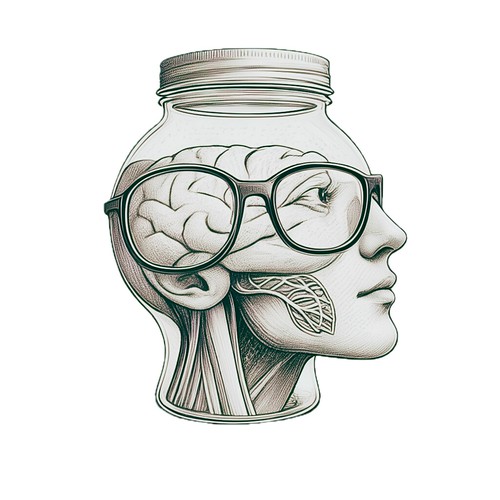Playing Dr. House
Last Tuesday I had the privilege of representing my class in the College's Clinicopathological Conference (CPC). It's a big academic gathering, one that I personally look forward to because it reminds me so much of Dr. House, only this time it's for real.
It goes like this. A weird true-to-life medical case is given, with detailed history and physical exam findings, management and treatment, and the progression of the patient's condition. Usually the patient ends up dead. But for what reason? Could the death have been caused by a single disease or a combination of diseases? Could the clinical manifestations have been due to a rare disease or a common disease with a very weird presentation? No one really knows, except the people from the Department of Pathology who have done the autopsy.
The case last time was that of a man who consulted for loss of sensorium. He had a stroke and trauma to the head. I won't bore you with the details—just so you know, it's the nitty-gritty details that make this exercise exciting—but his condition worsened. Later on the physicians found out that the patient had massive bleeding. He went into shock and died days later.
It was the Department of Neurosciences that hosted the event. Dr. Leonard Pascual, my young professor in neuroanatomy, discussed the case, masterfully speculated on what could have happened, and justly commented on how mismanaged the patient was. Now he had no idea what the autopsy report showed, but his analysis was so logical we thought he clinched the right explanation.
After that student representatives would also comment and give their clinical impression.
The Class 2014 team was headed by Ado Rivera, Ivan Burog, and Marcus Esteban—brilliant, these guys—and they did all the dirty work in thinking about the case. The working impression was that it could have been due to a liver problem (but we couldn't be too sure because there weren't enough tests done) or stress ulcers related to the stroke. Something like that. We were relieved because our team almost had the same working diagnosis as Class 2012.
And then Dr. Vergel de Dios from Pathology spoke. It turned out that the bleed was due to atherosclerosis of the arteries supplying the intestines. There was hardly any indication for that in the findings. Who could have thought?
But, like they say, it's not in the result but in the process. It's not what diagnosis you've arrived at but how you got there. There is, after all, a reason for everything. Sometimes we just have to take pains in overcoming the shallowness of our thinking.
It goes like this. A weird true-to-life medical case is given, with detailed history and physical exam findings, management and treatment, and the progression of the patient's condition. Usually the patient ends up dead. But for what reason? Could the death have been caused by a single disease or a combination of diseases? Could the clinical manifestations have been due to a rare disease or a common disease with a very weird presentation? No one really knows, except the people from the Department of Pathology who have done the autopsy.
The case last time was that of a man who consulted for loss of sensorium. He had a stroke and trauma to the head. I won't bore you with the details—just so you know, it's the nitty-gritty details that make this exercise exciting—but his condition worsened. Later on the physicians found out that the patient had massive bleeding. He went into shock and died days later.
It was the Department of Neurosciences that hosted the event. Dr. Leonard Pascual, my young professor in neuroanatomy, discussed the case, masterfully speculated on what could have happened, and justly commented on how mismanaged the patient was. Now he had no idea what the autopsy report showed, but his analysis was so logical we thought he clinched the right explanation.
After that student representatives would also comment and give their clinical impression.
The Class 2014 team was headed by Ado Rivera, Ivan Burog, and Marcus Esteban—brilliant, these guys—and they did all the dirty work in thinking about the case. The working impression was that it could have been due to a liver problem (but we couldn't be too sure because there weren't enough tests done) or stress ulcers related to the stroke. Something like that. We were relieved because our team almost had the same working diagnosis as Class 2012.
And then Dr. Vergel de Dios from Pathology spoke. It turned out that the bleed was due to atherosclerosis of the arteries supplying the intestines. There was hardly any indication for that in the findings. Who could have thought?
But, like they say, it's not in the result but in the process. It's not what diagnosis you've arrived at but how you got there. There is, after all, a reason for everything. Sometimes we just have to take pains in overcoming the shallowness of our thinking.
Labels: medicine

4 Comments:
wow kuya lance! you're really doing good in med ha! representative ka na ng kung ano ano! :D mike
wow! i remembered the previous CPCs that we had..but the most interesting one was the first ASMPH CPC...the case was about septic shock secondary to abortion..the doctors misdiagnosed it as meningococcemia..Neither from the consultants nor from the interns and residents got the right diagnosis..natawa pa nga kami sa mga nagdiagnose ng abortion from the upper
batch, pero in the end, sila pala ang tama..
- JOANNA -
dr. catedral! :)
again, thanks for representing the class despite the short notice. your delivery gave credibility to the text. =)
pasaway kasi itong si ivan at marcus. hahaha
Post a Comment
<< Home